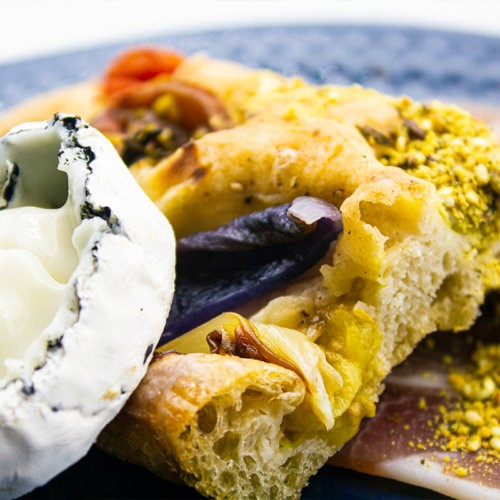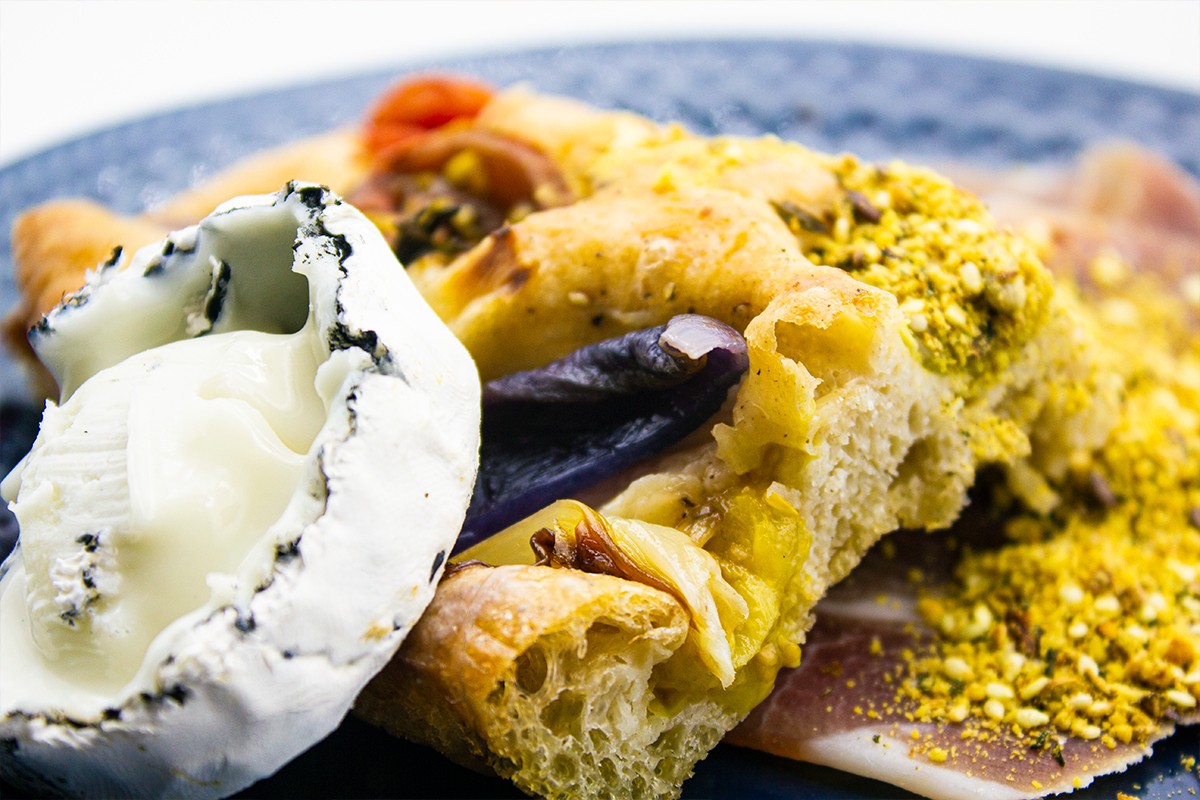
Heirloom tomato, Kalamata olive & red onion focaccia
Entertaining on the weekend? This focaccia is an amazing addition to any spread. It divides up easily, which is great for hosting, but it also complements pretty much everything and looks good in the process. From braai and potjiekos, cheeses and cured meats, to pasta or a simple green salad, the main function of this bread is to elevate. Any amateur cook should find this a breeze to compile. What you're aiming for is a nice bubbly aerated crumb with pockets of flavour and moisture dashed throughout. There aren't a load of ingredients, but try to use the best ones available. Combine your focaccia with authentic Italian cooking, peppery olive oil, flaky natural sea salt and, of course, stone-ground organic flour. Make sure to have a bread-eating partner around else you'll eat this all by yourself.
Equipment
- large 10cm deep baking tray
- Chopping board
- Sharp knife
Ingredients
- 400 g white bread flour
- 280 g water
- 10 g yeast
- 100 ml extra virgin olive oil
- 10 g sea salt flakes
- 300 g heirloom tomato
- 60 g pitted kalamata olives
- 1 red onion
- rosemary
- thyme
Instructions
- First mix your dough. But before that, if you'd like to add additional flavour to this bread, you could fashion yourself a poolish or biga (as it's known in Italy). This is is a pre-ferment starter. What you'll do is take 100g of the flour and 100g of the water with about 5g of yeast. Mix them together and leave overnight, then add the mix to the final dough. This will aid the final dough in becoming bubbly and light with an exceptional rise and oven spring. However, if you're strapped for time, simply mix the dough ingredients together and you will still obtain similar results.
- To make the dough, mix together the flour, water, yeast, 5g salt and 15ml of olive oil. Mixing is best done in a mixer to allow elasticity to form with this high-hydration dough. Allow the dough to rest for about 30 minutes whilst lining your baking tray vigorously with olive oil. Lay the dough out into the tray, extend all of your ten fingers and prod down on the dough until it is spread out over the base of the tray (line your fingers with some oil to make this less sticky).
- Whilst the dough is gaining some momentum, halve the tomatoes, pit the olives, clean off the rosemary and thyme & peel and cut the onion into large wedged pieces.
- After about 2 hours of the dough proofing in the tray you may add your array of toppings, pressing them gently into the already quite airy and fluffy dough. Grind pepper and sprinkle the remaining salt and herbs atop your creation.
- It should be ready with a total of three hours proofing after your initial mix. Glutinous bubbles should be erupting all over the surface; this is a clear indication that it's time to bake.
- A pre-heated 210c oven should be ready and waiting. I like to throw in about 100ml of boiling water into another empty tray at the base of the oven when I'm putting in the tray with the bread, this provides a great bit of oven spring.
- Bake for 40 minutes until golden. As a rule of thumb, allow the bread to cool for about 10 minutes in the tray, as it will contract a bit and be easier to remove from its baking tray. If you have superior equipment, flip it and remove immediately and rest on a rack to cool. Make sure the bread isn't left to steam itself, it will go soggy and become unpleasant.

